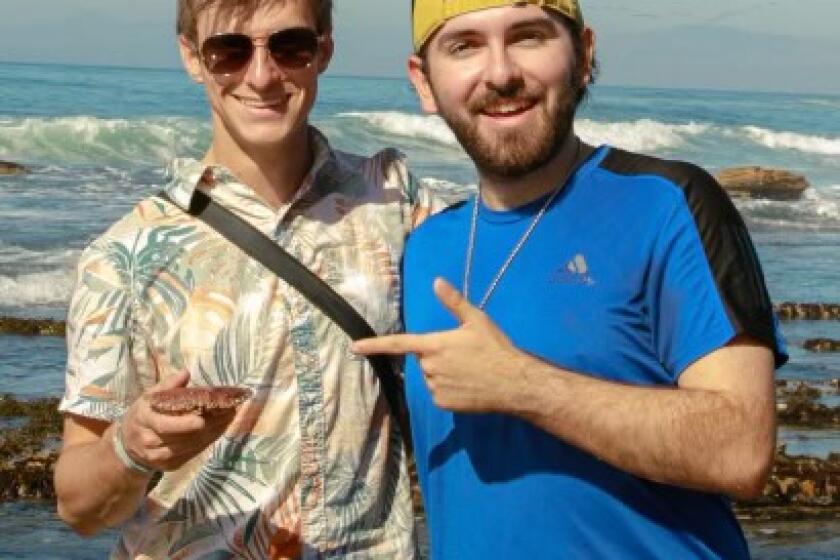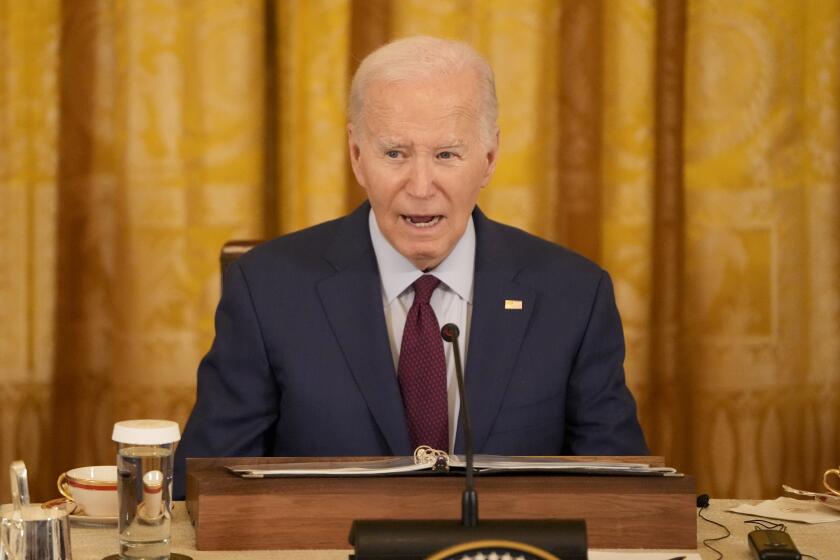UCLA orders outside probe of Taser arrest
Hoping to calm the furor created when UCLA police used a Taser to subdue a student studying in Powell Library, the university’s acting chancellor announced Friday that a veteran Los Angeles law enforcement watchdog would head up an independent investigation of the incident.
Norman Abrams said he ordered the probe after the university received numerous calls and e-mails from parents and alumni raising concerns about the officers’ actions during the videotaped Tuesday night arrest, which has been widely seen on TV news and the YouTube website.
“I want to assure them that the UCLA campus is a safe environment. Student safety and treatment are of paramount concern at UCLA,” Abrams said. “We plan to move ahead promptly with a complete and unbiased review.”
Abrams appointed Merrick Bobb, who was a staff attorney for the Christopher Commission and currently works as the Los Angeles County Board of Supervisors’ watchdog over the Sheriff’s Department, to handle the probe. Abrams said Bobb has a proven track record looking into allegations of police misconduct, including the Rodney King beating and more recently the riots at the L.A. County jail system.
The move came hours after more than 200 students marched to the UCLA police station calling for an independent investigation into the Taser incident as well as the suspension of the officers involved.
Wearing signs reading, “I am a student, don’t Taser me” and chanting, “Tasers out of UC,” the protesters said it was an inherent conflict of interest for university police to handle the investigation of their own officers.
“What was done was unnecessary,” said Rahmatullah Akbar, a senior majoring in psychology. “We as students don’t deserve to be Tasered.”
Tuesday’s incident occurred about 11 p.m. in a library filled with students studying for midterm examinations.
According to the university, Mostafa Tabatabainejad, a 23-year-old senior, was asked for his ID as part of a routine nightly procedure to make sure that everyone using the library after 11 p.m. is a student or otherwise authorized to be there. Campus officials have said the long-standing policy was adopted to ensure students’ safety.
Authorities said Tabatabainejad refused repeated requests by community service officers and regular campus police to provide identification or to leave.
UCLA Police Chief Karl Ross said the officers decided to use the Taser to incapacitate Tabatabainejad after he went limp while they were escorting him out and urged other library patrons to join his resistance.
Mavrick Goodrich, a chemical engineering major who observed the incident, said Tabatabainejad shouted, “Am I the only martyr?”
Some witnesses disputed the officers’ account, saying that when campus police arrived, Tabatabainejad had begun to walk toward the door.
Tabatabainejad’s attorney, Stephen Yagman, said his client refused to show his ID because he thought he was being singled out because of his Middle Eastern appearance. Tabatabainejad is of Iranian descent but is a U.S. citizen by birth and a resident of Los Angeles.
The student was shocked five times with the Taser, Yagman said.
Another student used a cellphone camera to record portions of the incident, in which Tabatabainejad can be heard screaming in pain when the Taser shocks are administered.
One of the issues Bobb’s investigation will examine is whether the officers complied with the university police rules for using Tasers.
Several local police agencies -- including the LAPD and Los Angeles County Sheriff’s Department -- allow officers to use Tasers only if a suspect poses a physical threat or is acting combatively.
The sheriff’s policies expressly say deputies can’t use Tasers simply to move someone.
“We look for assaultive conduct,” said Bill McSweeney, chief of the sheriff’s leadership and training division “We generally don’t use the Taser on passive resisters except when an individual indicates explosive action to follow, such as a verbal threat.”
But UCLA police are allowed to use Tasers on passive resisters as “a pain compliance technique,” Assistant Chief Jeff Young said in an interview Friday.
Under UCLA policy, Young said, officers can use the weapons after considering the potential injury to police and to the individual as well as the level of resistance and the need for prompt resolution.
Young described Tabatabainejad as a “passive resister” who refused to cooperate with officers. He acknowledged that the student didn’t actively resist the officers.
“He was 200 pounds and went limp and was very hard to manage. They were trying to get him on his feet,” Young said.
The officers used the device in stun mode -- which affects only the part of the body being touched -- rather than the dart mode, in which tiny electrodes are fired into a person and pass a current through them, disabling the person entirely.
Young said police have used the Tasers “on several occasions” before but said he didn’t know how many times.
The officers involved in Tuesday’s incident were off duty Friday but had not been placed on administrative leave.
On Friday, many students remained outraged over Tabatabainejad’s treatment.
“Once you have him subdued, you don’t have to keep Tasing him,” said Rohit Mahajan, a psychobiology major who watched the video. “You could see him crying. He’s not a threat. He’s maybe acting like a smartass, but he doesn’t” deserve that.
The protest march was organized by leaders of the campus Muslim and Iranian American student groups. They support Tabatabainejad, though some demonstrators said they didn’t think the officers’ actions were motivated by his ethnicity
The American Civil Liberties Union also said that it was examining the incident.
“It is an appalling and traumatically excessive use of force on someone passive-resisting,” said ACLU attorney Peter Bibring. “The officers seem so confident in what they are doing. They need to change their policies and training.”
UCLA officials urged students and others to withhold judgment actions until the investigations are completed.
“Not all the events of Tuesday evening can be heard or viewed on YouTube,” Ross said at a news conference with Abrams.
The acting chancellor expressed confidence in and respect for the UCLA police, and noted that Ross’ department would continue with its own internal investigation.
“But there are times when it is helpful to turn to an outside review as well,” Abrams said.
ron.lin@latimes.com
charles.proctor@latimes.com
More to Read
Start your day right
Sign up for Essential California for news, features and recommendations from the L.A. Times and beyond in your inbox six days a week.
You may occasionally receive promotional content from the Los Angeles Times.








